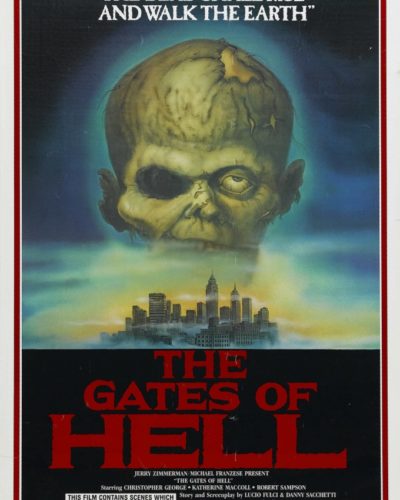A Portal to Darkness: “Hellmouth” Unveiled
As one character grimly states, “We’re all waiting to get sucked into the darkness eventually,” and so begins our descent into the eerie world of “Hellmouth.” Directed by John Geddes and released in 2013, “Hellmouth” tells the tale of a gravekeeper named Charlie Baker, tasked with an unnerving quest to a remote town. His journey spirals into a living nightmare as he confronts ghoulish entities and wrestles with the existential dread of what lies beyond the grave. Taking a minimalist approach to its narrative, the film steeps the viewer in a suspenseful atmosphere fraught with horror and the unknown.
A Shadowy Labyrinth: Crafting Fear Through Atmosphere
Surreal Shades of Dread
“Hellmouth” artfully constructs horror through a creeping sense of doom that lingers like fog over a graveyard. The pairing of dimly lit sets and a color palette that jolts with its sterile bleakness immediately sets the tone for a chilling experience. Director Geddes maneuvers tension and fear with a deliberate pace, allowing the unsettling aura of the film’s world to act like quicksand, slowly drawing the viewer deeper into its abyss.
Cinematic Nightmares
The cinematography of “Hellmouth” stands as a testament to visual storytelling in horror. Eerie lighting often strips scenes of warmth, bathing them in stark contrasts that echo the characters’ internal desolation. The innovative use of camera angles, darting and weaving, creates a disorienting effect, amplifying the film’s surreal nightmarish quality. Moreover, Geddes sprinkles the narrative with a banquet of visual effects reminiscent of gothic comic books, which intersect reality with the otherworldly.
Whispers and Screams: The Soundtrack of Horror
The utilization of sound in “Hellmouth” must not be understated. The film’s soundtrack concocts an aural concoction of despair and tension. Agonizing strings and somber chords interlace with the quieter moments to generate an omnipresent sensation of dread. Quieter moments, punctuated by the absence of sound, further elevate the characters’ chilling isolation. When the silence breaks, it’s with a shock to the system, revealing that in “Hellmouth,” the next fright is only a sharp breath away.
The Living and the Damned: Performances in the Abyss
Characters in “Hellmouth” are etched with the burden of their fates, a fact that the performers embody with haunting conviction. The cast delivers with performances that range from the weary acceptance of one’s doom to frantic terror. Our gravekeeper, portrayed with an air of world-weary inevitability, anchors the film with a sense that he is both part of the world of the living and a herald of the dead. The reactions to the terror are raw, drawing the audience into the spiral of horror alongside them.
The Ghost in the Machine: Fear Mechanisms Unleashed
“Hellmouth” dips its artistic brush into various subgenres of horror, blending psychological twists with the supernatural. It doesn’t bind itself to traditional tropes but instead forges its path with a story that teeters on the edge of reality. The fear tactics employed are a mix – from the slow-boil of psychological tension to the visceral punch of well-timed jump-scares. The film paces these moments meticulously, understanding that anticipation is the truest form of terror.
Horrors Reflection: Themes Beneath the Surface
The film goes beyond mere scares, weaving a commentary on the human condition – the inevitability of death, the struggle for redemption, and the enigma of what lies in the shadows beyond our comprehension. By blending horror with a philosophical musing on existential dread, “Hellmouth” broadens its impact, giving viewers more than just thrills but also something to ponder long after the credits roll.
Closing the Gates: The Verdict on “Hellmouth”
“Hellmouth” stands as a compelling entry into the horror genre. For those seeking a film that mingles classic gothic visuals with modern storytelling, this may be your siren call. It’s most apt for genre enthusiasts who appreciate horror that is as contemplative as it is unsettling. Casual viewers might find the pacing deliberate, but those with a penchant for atmospheric horror will revel in its claustrophobic embrace.
While the film does not shy from darker themes and visuals, it is not excessively gruesome, making it suitable for a wider audience that can handle tension without extreme gore. It can be compared to works like “The Others” or “Jacob’s Ladder” for its psychological layers and otherworldly dimensions – although “Hellmouth” carves its own unique spot in the horror annals.
In conclusion, “Hellmouth” succeeds in delivering a distinct horror experience that marries atmosphere with intellectual depth. Its strengths lie in moody cinematography, sound design, and a commitment to a vision that haunts the viewer. While it may not be universally appealing due to its peculiar narrative style, those who step into its world will find themselves lost in its dark embrace, pondering the nature of their own personal hellmouth long after they’ve escaped its grasp.




